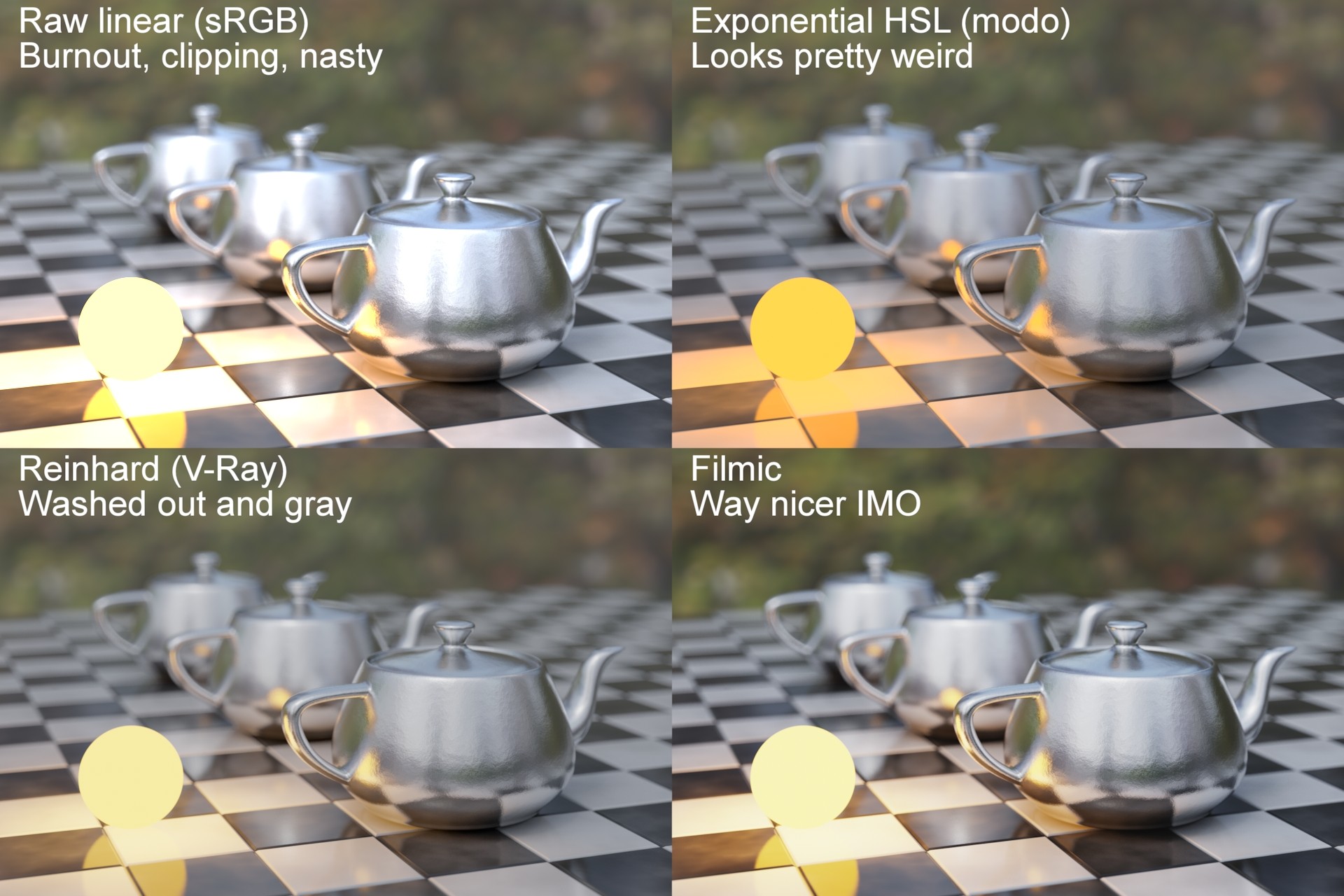61
[Max] General Discussion / Re: Tonemapping - Plz Halp
« on: 2020-05-04, 14:37:20 »Regarding that image of my earlier test, as others noted, I would have to use the exact same HDRI and closest as possible materials, not a simple conversion.
So I repeated the test. Same HDRI, Same LUT (KimAmlan02), Matched white balance. very simple materials.
Do you really see a 50% bump in realism in the Fstorm one? Maybe I don't have your eyes, it is entirely possible that I actually don't have the perceptual capacity.
Anyway, now that I've conducted the test in a more proper manner, my point stands. I will write it in bold so you don't miss it and you stop arguing with something I'm not saying:
Fstorm has better tonemapping. I wish Corona had a DSLR like tonemapping
However, I don't think that is the main reason for the Fstorm community producing seemingly more realistic images more consistently than the corona render community.
I think there is a small number of users (Agentdark45 included) who have superior understanding and perceptual abilities and actually notice the super slight differences between the two renderers, which are real and measurable.
But I believe what MOST people notice is a vibrant community that attracts great artists who are learning faster and feeling comfortable sooner with Fstorm, and thus, becoming good enough that, overall, the Fstorm community is producing better renders, more artistic, more realistic.
Just to be super clear, FSTORM HAS BETTER TONEMAPPING, 100% agree. And it has a real impact in realism! I wish Corona implements this soon
ps. I also wish corona becomes a lot more beginner and artist friendly by making it MUCH EASIER to produce the best possible images it already can, which, BTW would inevitably be WORST than Fstorm regarding tonemapping. At least until corona implements a better tonemapping, which I will continue to push and wish for.
Apologies if I missed the spirit of your post, it seemed contradictory at the time of posting. I'm glad to see you are supporting the call for improved tonemapping in Corona.
My main contention here is that some posters are claiming:
1. "Everything is fine with Corona as is, zero perceptual difference in tone-mapping between Fstorm and Corona; the issue is noobish user error being fixated on stock settings".
2. While other posters are stating that there is a clear and obvious limitation with Corona's tonemapping (despite Bertrand Benoit levels of Corona mastery and tweaking), and we want improved colour space/ACES like tonemapping implemented as a priority over other seemingly trivial features that eat up precious dev time.
Regarding your recent comparison, yes there is a difference between the two (perhaps not 50%) but I can clearly see the black crush in the shadows issue I have mentioned before in trying to achieve a contrasty punchy image whilst retaining not overly clamped highlights (look at how much detail is lost in the lower right shadow on the floor in the Corona version, along with the shadow at the base of the exterior sphere, the soft shadow gradient on the left hand interior wall, and the tendancy for Corona to go to pure black in corner gaps - the dynamic range of the shadows have been butchered). Now scale this issue up to images that mostly deal with subtle tonal variations (i.e moody or brightly lit product shots).
As a side note outside of tonemapping, you can also see the filtering issue I mentioned previously in the Corona example. Look at how much detail has been smoothed out of the concrete walls and wood material in the Corona version.




